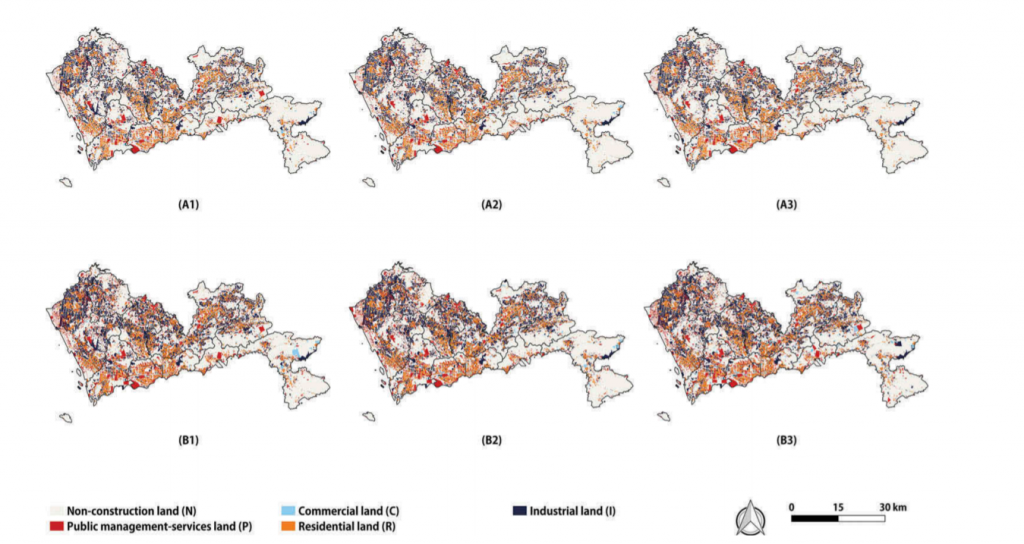ABSTRACT
Vector-based cellular automata (VCA) models have been applied in land use change simulations at fine scales. However, the neighborhood effects of the driving factors are rarely considered in the exploration of the transition suitability of cells, leading to lower simulation accuracy. This study proposes a convolutional neural network (CNN)-VCA model that adopts the CNN to extract the highlevel features of the driving factors within a neighborhood of an irregularly shaped cell and discover the relationships between multiple land use changes and driving factors at the neighborhood level. The proposed model was applied to simulate urban land use changes in Shenzhen, China. Compared with several VCA models using other machine learning methods, the proposed CNN-VCA model obtained the highest simulation accuracy (figure-of-merit = 0.361). The results indicated that the CNN-VCA model can effectively uncover the neighborhood effects of multiple driving factors on the developmental potential of land parcels and obtain more details on the morphological characteristics of land parcels. Moreover, the land use patterns of 2020 and 2025 under an ecological control strategy were simulated to provide decision support for urban planning.

Q.E.D.









